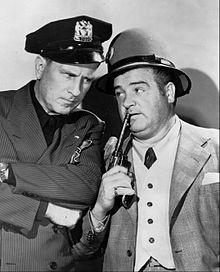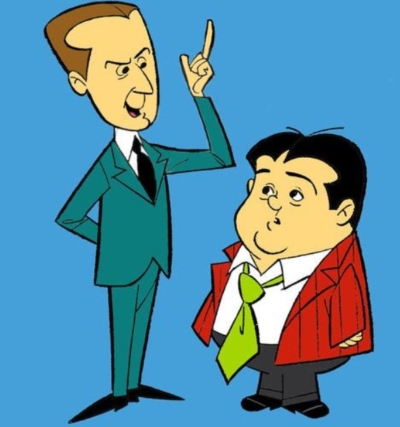Can you imagine a world without humor? Think how bleak and depressing that would be. Humor, by the way, is supposed to be totally lacking in Hell, which is another reason I don’t want to go there. Heaven, in contrast, is described as unimaginable joy.
But, as we all know: there’s humor . . . and then there’s humor. In fact there are many kinds of humor. Some are life-giving, others are degrading, and it’s important to know the difference.
In the Sacred Windows universe, good humor is a window, a spark of the eternal truth that comes to us from on high, presented in a delightful and entertaining fashion. But creating and understanding humor is really a function of the mind rather than the emotions. Did you ever realize that the best humor is smart?
Good Humor
It doesn’t take much intelligence to exploit the worst aspects of human nature for a cheap laugh. Some of our notoriously grotesque modern comedians like Louis C.K., Sarah Silverman, and Roseanne Barr (among many others) have no limits to their indecency and contribute nothing of any value to the lives of their fellow human beings.
 The best comedians are smart both in their creation of material and in their deliveries. They take what is real and shine a light on its paradoxes or curious aspects, which the intelligent eye sees.
The best comedians are smart both in their creation of material and in their deliveries. They take what is real and shine a light on its paradoxes or curious aspects, which the intelligent eye sees.
Placing a commonplace thing against another and giving it an unexpected twist is what makes us laugh, like the classic Henny Youngman line where he says, “Now, take my wife…,” as if he were beginning to tell you a story about her, and then adds “…please” for the hilarious punchline. Or the spectacle of the odd-looking Rodney Dangerfield complaining that he doesn’t get any respect.
It’s not that all good comedians are morally upright individuals or always tell the best jokes, it’s just that they use their minds to find the incongruities of human behavior or the world and present them in a way that relieves the stresses of life for a while through laughter. Their sense of timing makes a joke “pop” and gives the paradox a chance to surprise us and delight us.
Good humor like this fulfills many purposes:
- It balances out the inevitable sufferings and desolations of life;
- It opens us up to the essential goodness of the world (we don’t laugh at evil things, do we?);
- It unifies us through laughter, overcomes divisions, and creates the sense that we are all human, all fallible, and all in this together.
In its deepest spiritual sense, humor points out the absurdity of this tainted world and reminds us that we are meant for another world full of joy. That’s why humor is a sacred window.
And personally, I think God Himself must have the perfect sense of humor – I mean, He created the pure joy of puppies and absurd, funny little creatures like platypuses, ostriches, pandas, and teenagers, didn’t He?
Abbot and Costello
Anyone of a certain age will know the “Who’s On First?” routine that made the team of Bud Abbot and Lou Costello famous. They were the quintessential comedy duo: Abbot, the tall, grizzled, raspy straight man; Costello, the short and pudgy, fast-talking funny man who could floor you with a line or a look.
 The very concept of putting two wildly different personalities and body types on stage together is itself a great example of paradox (incongruity). If we got to look in on the conversations of two same-looking guys with similar personalities we’d be bored stiff. Two sharp and contradictory personalities, however, are something to marvel at and a lot of fun to listen to. That’s the whole point. In Abbot and Costello we have intelligent humor at its finest.
The very concept of putting two wildly different personalities and body types on stage together is itself a great example of paradox (incongruity). If we got to look in on the conversations of two same-looking guys with similar personalities we’d be bored stiff. Two sharp and contradictory personalities, however, are something to marvel at and a lot of fun to listen to. That’s the whole point. In Abbot and Costello we have intelligent humor at its finest.
Enduring Humor
A generation from now, no one will remember the raunchy jokes of Andrew Dice Clay or Dave Chappelle, but Abbot and Costello live fondly in the hearts of Americans for a good reason: they entertained us for over twenty years as a team and left thirty-six movies and innumerable comedy skits as their legacy.
 I even remember watching cartoons of them when I was a kid (Costello yelling, Heeeey Abbottttttt!”), which was some time after their public careers were over. (Costello died in 1959, Abbot in 1974.) Above all, their humor appealed to Americans because it was decent and clever.
I even remember watching cartoons of them when I was a kid (Costello yelling, Heeeey Abbottttttt!”), which was some time after their public careers were over. (Costello died in 1959, Abbot in 1974.) Above all, their humor appealed to Americans because it was decent and clever.
The two men both got their starts in show business during the vaudeville era (1920s-30s) and then became partners in both radio and Broadway productions in the late 1930s. By the early ’40s they had their own TV show and were starting to make movies. They became famous as a sort of odd couple of that era whose pairing was deliberately funny. They were known for their humorous and quick repartee which was nowhere better expressed than in their most memorable routine.
“Who’s on First?” was hardly five minutes long when they first performed it, but it tended to get longer as they repeated it. Once they got the basic dialogue down, they could ham it up and extend the scene, which they did often. It’s said that they never performed it the same way twice. [You’ll notice that the two versions of the same skit below are different lengths. The longer one is from later in their career.]
The “Who’s on First?” skit itself was not actually written by any one person in its final form but was the adaptation of a couple of vaudeville word play routines that developed and became more refined over time. Abbot and Costello’s genius was that they honed that one masterpiece into an American classic.
Why So Funny?
In addition to the general reasons I mentioned above (personality and body type), “Who’s On First?” is the classic funny sketch for a number of other reasons:
- Cultural context: Baseball as a backdrop (called America’s favorite pastime in that era) couldn’t have been better suited to Americans audiences.
- Tension: A seemingly casual conversation gradually turns into a battle of wits based on a misunderstanding between the two friends, which then ended up as a sort of closed loop that the men couldn’t get out of. Everyone but Costello got the joke.
- Emotional contrast: Abbot just states his information coolly (as if baseball players with such strange names is normal) while Costello gets more and more worked up as the skit goes on – in one of the versions he gets so frustrated with Abbot, he yells, “I’ll break your arm!”
- Absurdity: The idea that there are baseball players named “Who”, “What”, “Why”, “I don’t know”, “Yesterday”, etc. is so absurd it’s funny.
- Timing: Clearly, these two consummate actors have mastered perfect timing in the back-and-forth of the extremely intricate dialogue.
- Brilliant use of English: Since humor almost always involves words, the clever use of one’s native language has to be part of the presentation. In this case, the fact that the same words “Who”, “What”, and “Why” can be used as interrogatives or as pronouns is what creates the confusion. Abbot actually transforms them into nouns by using them as human names, which is an even cleverer linguistic trick. Costello, of course, thinks they’re questions.
- Peak Moment: Towards the end of the routine, the audience begins to think that Costello actually gets the point of all these names and positions when he recites them off correctly, but when Abbot says, “That’s the first thing you’ve said right so far,” Costello explodes with, “I don’t even know what I’m talkin’ about!”
There is more to discuss about the skit (such as the use of foils like Who’s wife, etc.) but we’ll leave it at that and move on to the main attraction. I’ve put links to two versions of the routine below. If you only have time for one, watch the first one because it features the marvelous audience reaction.
Have a good wholesome laugh!
The Performances
“The Actors Home” TV skit (performed in 1953 – 7:54 long)
Original movie version (from the 1945 movie, The Naughty Nineties – 5:31 long)
One Final Note
If you have an extra few minutes, you might enjoy this pretty hilarious video of a twenty-something Brit couple who film themselves watching “Who’s On First?” for the first time. (It’s hard to believe that anyone in the English-speaking world has not seen this!) Their reactions are precious and a reminder that so much humor is culturally conditioned – but also able to be appreciated by anyone with a mind.
My favorite part is at the beginning when the young man pauses the video and asks, “Is that English?” and the young woman says, “Oh, that’s posh American.” Haha. No, actually, that’s vaudeville, and the best of American culture. Better yet, after they’ve watched it, they describe the skit as “eight minutes of pure joy.”
Couldn’t agree more.
———-
[Note: This article is a reproduction of the Sacred Windows Email Newsletter of 7/10/22, so it does not end with the regular Soul Work section. Please visit our Newsletter Archives.]




[…] I can’t go into the complexities of human funniness (which I’ve written about in other places [Abbot and Costello, Johnny Carson, and Tim Hawkins]). I’ll just focus on the ways in which God’s extraordinary […]